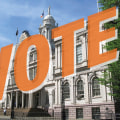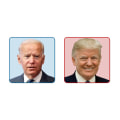As an expert in disability rights and accessibility, I understand the importance of ensuring equal access to voting for all eligible individuals. With the 2020 election approaching, it is crucial that we address the unique challenges faced by voters with disabilities in exercising their right to vote. In New York, there are several accommodations in place to ensure that individuals with disabilities are able to participate in the democratic process.
Understanding Disability Rights in New York
Before discussing the specific accommodations for voters with disabilities in New York, it is important to have a basic understanding of the legal framework that protects their rights. The Americans with Disabilities Act (ADA) and the Help America Vote Act (HAVA) both play a crucial role in ensuring equal access to voting for individuals with disabilities. The ADA, passed in 1990, prohibits discrimination against individuals with disabilities in all areas of public life, including voting.This means that polling places must be accessible to individuals with disabilities and reasonable accommodations must be made to ensure they are able to cast their vote. HAVA, passed in 2002, specifically addresses voting accessibility for individuals with disabilities. It requires that all polling places have at least one accessible voting machine and that individuals with disabilities have the option to vote privately and independently.
Accessible Polling Places
In New York, all polling places are required to be accessible to individuals with disabilities. This means that they must have ramps or other means of entry for those who use wheelchairs or have mobility impairments. Polling places must also have accessible parking spaces and clear pathways for individuals with visual impairments. In addition, polling places must have at least one accessible voting machine that is compliant with HAVA standards.These machines have features such as audio ballots and large print options to accommodate individuals with visual impairments. Poll workers are also trained to assist individuals with disabilities in using these machines.
Alternative Voting Options
For individuals with disabilities who are unable to physically go to a polling place, New York offers alternative voting options. These include absentee ballots and early voting. Absentee ballots allow individuals to vote by mail if they are unable to go to a polling place on Election Day. This option is available to all registered voters in New York, including those with disabilities.The ballot can be requested online or by mail, and must be returned by mail or in person by a designated individual. Early voting, which was introduced in New York in 2019, allows individuals to vote in person at designated polling places before Election Day. This option is particularly beneficial for individuals with disabilities who may have difficulty navigating crowded polling places on Election Day.
Assistance at the Polls
In addition to accessible polling places and alternative voting options, New York also offers assistance at the polls for individuals with disabilities. This includes the option for individuals to bring someone with them to assist in casting their vote, as well as trained poll workers who can provide assistance if needed. Under HAVA, individuals with disabilities also have the right to request an accessible voting machine if the one at their polling place is not functioning properly. Poll workers are required to provide this accommodation upon request.Accessible Voter Information
In order for individuals with disabilities to make informed decisions when casting their vote, it is crucial that voter information is accessible.In New York, all voter registration forms and election materials must be available in accessible formats, such as large print or braille. In addition, the New York State Board of Elections website offers a variety of resources for voters with disabilities, including information on accessible polling places, alternative voting options, and voter rights. This ensures that individuals with disabilities have equal access to important election information.
Challenges and Improvements
While New York has made significant strides in ensuring equal access to voting for individuals with disabilities, there are still challenges that need to be addressed. One major issue is the lack of accessibility in some polling places, particularly in older buildings. This can make it difficult for individuals with disabilities to physically enter the polling place or use the accessible voting machine. In addition, some individuals with disabilities may face barriers in registering to vote or requesting an absentee ballot.This can be due to difficulties in navigating the registration process or lack of accessible information. To address these challenges, there have been ongoing efforts to improve accessibility in New York elections. This includes training for poll workers on disability rights and accommodations, as well as initiatives to make polling places more physically accessible.
Conclusion
Ensuring equal access to voting for individuals with disabilities is crucial in upholding their right to participate in the democratic process. In New York, there are several accommodations in place to ensure that voters with disabilities are able to cast their vote independently and privately. However, there is still work to be done in addressing challenges and improving accessibility.By continuing to prioritize the rights of individuals with disabilities, New York can set an example for other states in promoting equal access to voting for all.



